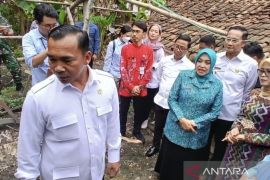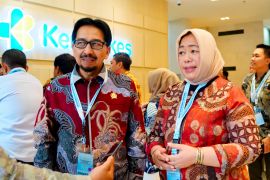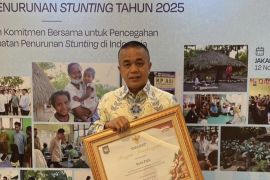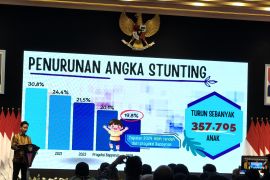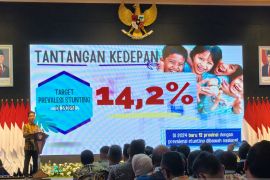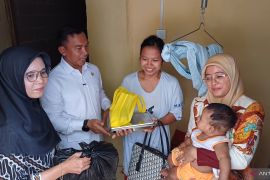“The preliminary findings of this study can be utilized by stakeholders in efforts to combat stunting. We dedicate this rich data; please utilize it, not only for science but also as a basis for policymaking,” country lead of the AASH study in Indonesia, Dr. Umi Fahmida, said.
The preliminary findings of the AASH Indonesia study show that stunting is not only a nutritional problem but is also related to epigenetic factors, digestive tract health, infection, microbiota, and maternal mental health.
The dissemination of the preliminary findings was opened by the director of SEAMEO RECFON, Dr. Herqutanto. MPH., MARS., Sp.KKLP; vice chancellor for research and innovation of the University of Indonesia, Prof. Dr. Hamdi Muluk, M.S.; and deputy for coordination of family and population quality improvement at the Coordinating Ministry for Human Development and Culture (Kemenko PMK), Woro Srihastuti Sulistyaningrum, ST., MIDS.
Conducted from 2019 to 2024, AASH was an interdisciplinary study that aimed to compile a stunting typology using a whole-child approach.
The study covered three countries, namely India, Indonesia, and Senegal. In Indonesia, the study was conducted in East Lombok.
The study consisted of two components. First, the observation of a cohort of pregnant women, which was continued until their children were 24 months old.
Second, an intervention study that used eggs as additional food to determine the effectiveness of improving the quality of food intake during pregnancy on epigenetics and stunting in infants.
During the period, various data collections were carried out. The first data type focused on the intake profile and nutritional status, epigenetics, genetics of the child and both parents, and digestive tract health (physical components).
The second data type concerned child development, including the thinking process, language and motor skills, learning readiness, and psychosocial care (cognitive component). The third data type covered the early childhood learning environment (education component).
The fourth concerned the food environment, including WASH, food safety, and the food value chain of nutrient-dense foods (food component).
The data collection was carried out at several stages in the first 1,000 days of life, namely pregnancy, breastfeeding, and the complementary feeding period.
The initial AASH findings on the cognitive component showed that the development of 53 percent of children in East Lombok was in the average category, but not optimal due to various factors such as epigenetics, microbiome, and nutrition, especially at ages one to two.
"We also studied the child's older or younger siblings aged three to six years, and the results were also average and not well-developed," head of the cognitive component research team, Dr. Risatianti Kolopaking, said.
Another finding was that mental health problems in mothers need to be considered because they affect the growth of children, both one-year-olds and preschool children.
Suboptimal stimulation in stunted children also disrupts motor development, such as physical aspects. This is an important aspect of a child's future development, especially in readiness to learn.
Meanwhile, the initial findings on the education component revealed that the quality of PAUD teachers greatly influences child development. Teachers holding a bachelor's degree, especially PAUD graduates, foster a healthy learning environment.
The study not only examined PAUD teachers under the auspices of the Ministry of Primary and Secondary Education but also the Ministry of Religion.
Based on the initial findings, teachers who teach in raudhatul athfal (RA) still lack the opportunity to develop professionally.
The study also found that selenium plays an important role in child growth but is often not given enough attention in nutritional interventions. Systemic and intestinal inflammation affects child growth by disrupting growth hormones.
Meanwhile, epigenetics can predict the risk of stunting, especially in girls. Furthermore, the highest growth rate of children is at the age of 3 months and the lowest at 14 months.
Concerning the food system, it is known that respondents experienced acute difficulties in the information and promotion components for all types of food.
Based on nutritional content, a variety of protein sources are needed to meet nutritional needs, especially for problematic nutrients, namely iron, calcium, zinc, and folate, and also the need for a combination of animal proteins.
For example, foods that combine liver, eggs, and tofu or tempeh can provide a more complete intake of nutrients.
The AASH study was funded by the United Kingdom Research and Innovation-Global Challenges Research Fund (UKRI-GCRF). AASH Indonesia was coordinated by the SEAMEO RECFON - Regional Nutrition Center, University of Indonesia (PKGR UI).
The AASH study adopted a holistic approach that focused on overall child development. The study designed interventions to prevent, address, and restore several key characteristics of stunting.
The comprehensive approach covered various domains, from physical (nutrition, digestive health, epigenetics, microbiome) and living environment (diet, behavior, pathogens, parasites) to education (cognition, early childhood development, parenting) and the wider food system (food value chain, market, food security, and food access).
All of these domains are connected by social values that directly influence children's life experiences.
Related news: MBG program to reduce stunting prevalence rate: Deputy Minister
Related news: Indonesia aims to reduce stunting to 14.2 percent by 2029
Translator: Azis Kurmala
Editor: Aditya Eko Sigit Wicaksono
Copyright © ANTARA 2025


